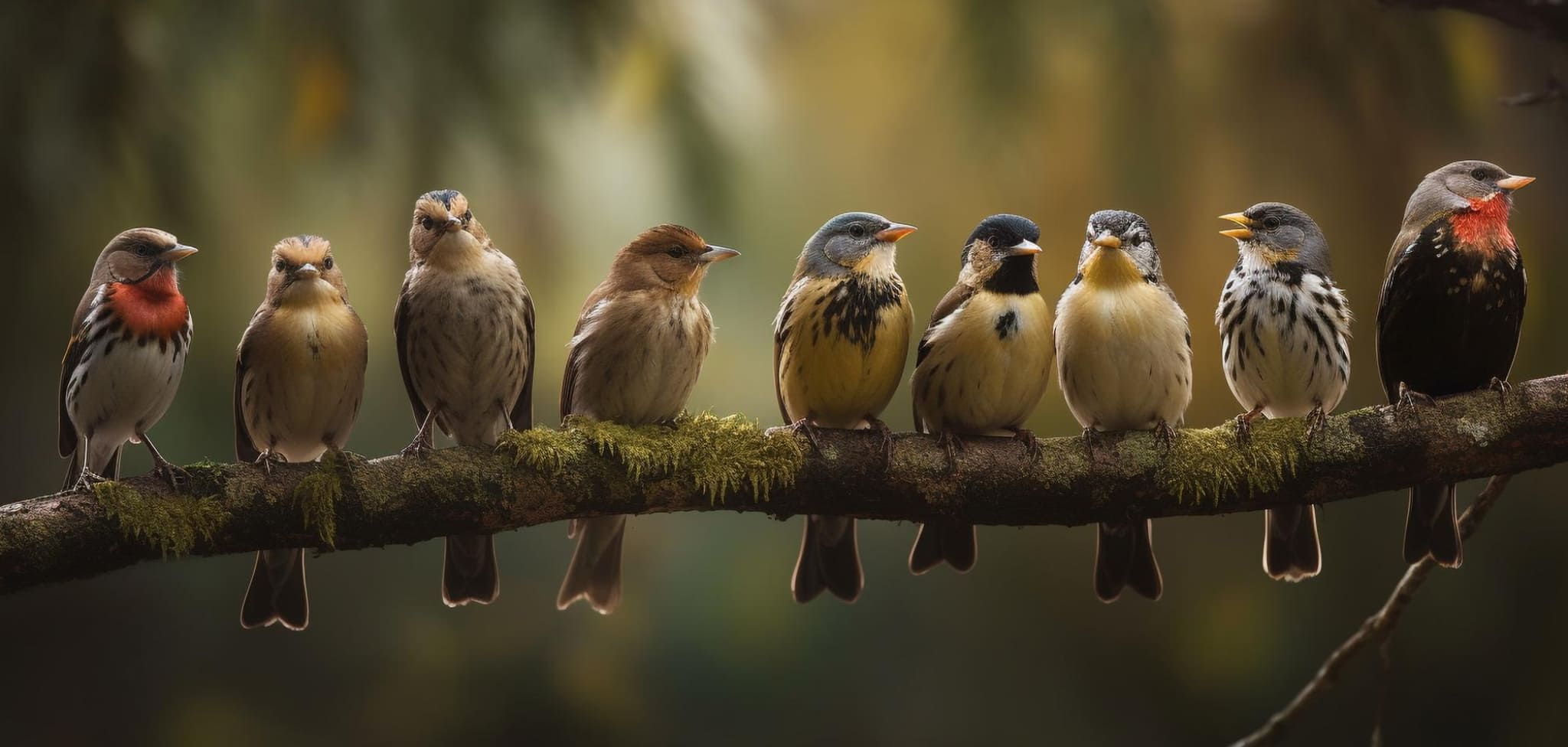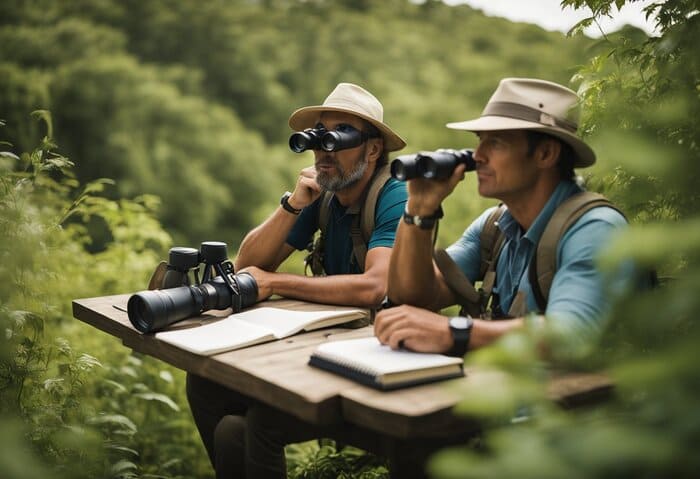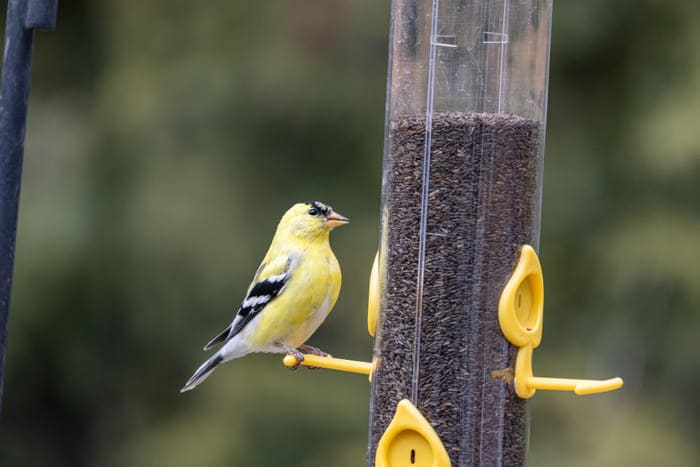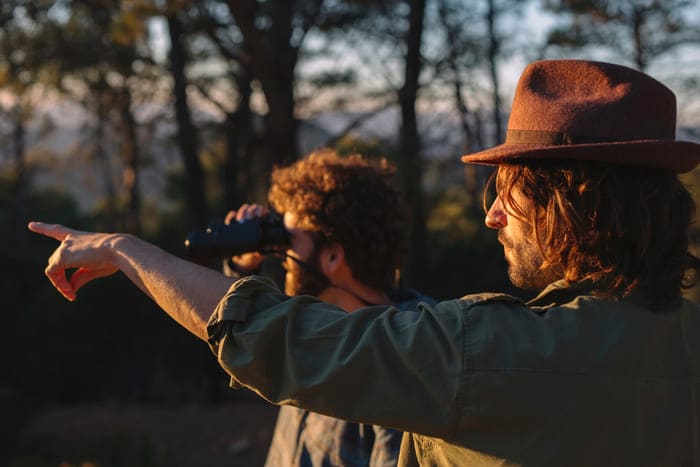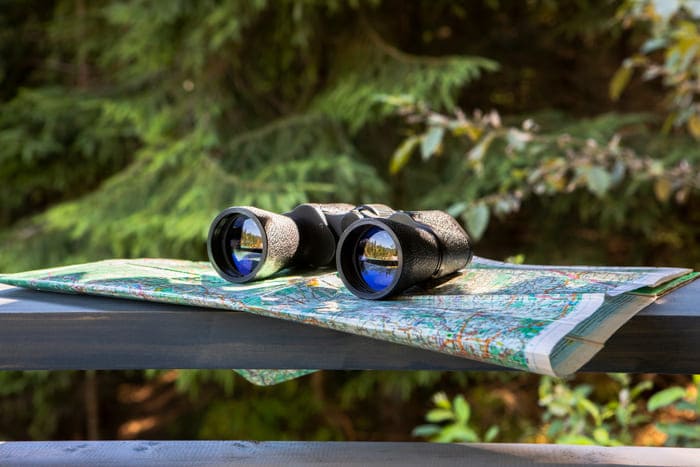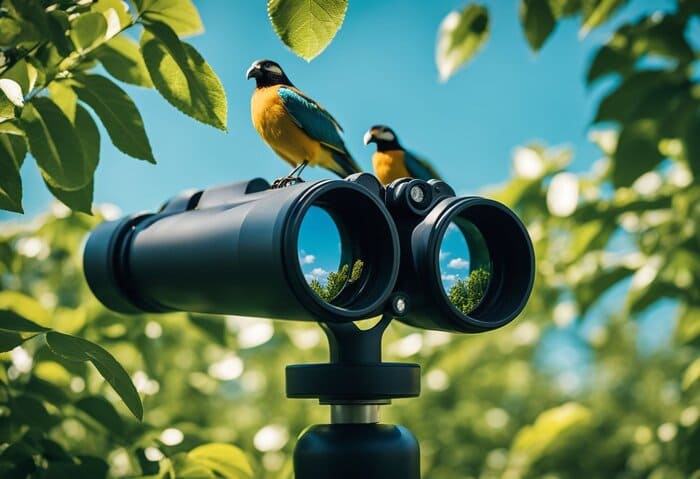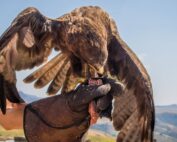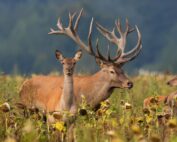The Ultimate Guide to Birdwatching: A Hobby for All
Birdwatching, also known as birding, is a delightful and fulfilling hobby that allows you to connect with nature and explore the fascinating world of birds. Whether you’re observing the colorful plumage of a cardinal or marveling at the soaring flight of a bald eagle, birdwatching offers a unique and immersive experience. In this comprehensive guide for beginners, we will walk you through the essentials of birdwatching, from the equipment you need to the best locations to spot different species. So grab your binoculars, a field guide, and a sense of adventure as we embark on this avian journey.
Getting Started with Birdwatching
Why Birdwatching is a Popular Hobby
Birdwatching has gained immense popularity for several reasons. Firstly, it offers a unique opportunity to connect with nature and appreciate the beauty and diversity of birds. It allows individuals to escape the hustle and bustle of everyday life and immerse themselves in the tranquil world of birds.
Secondly, birdwatching is a versatile hobby that can be pursued anywhere, from your own backyard to remote wilderness areas. It provides a sense of adventure and exploration, as you never know what species you might encounter on your birding excursions.
Lastly, birdwatching is a lifelong learning experience. It encourages curiosity, scientific observation, and environmental awareness. As you delve deeper into the world of birds, you’ll develop a greater understanding of their habitats, migration patterns, and conservation needs.
The Benefits of Birdwatching
Engaging in birdwatching offers numerous benefits for individuals of all ages. Here are some of the key advantages:
- Stress Relief: Spending time in nature and observing birds has been shown to reduce stress levels and promote relaxation. The soothing sights and sounds of birds can have a calming effect on the mind and body.
- Physical Activity: Birdwatching often involves walking or hiking in search of different species. It provides an opportunity to engage in moderate physical activity and improve cardiovascular health.
- Mental Stimulation: Identifying birds and learning about their behaviors and habitats stimulates the brain and enhances cognitive abilities. It encourages observation skills, attention to detail, and memory recall.
- Connection with Nature: Birdwatching fosters a deeper connection with the natural world and increases awareness of environmental conservation. It encourages individuals to appreciate and protect the habitats and ecosystems that birds rely on.
- Social Interaction: Birdwatching can be a social activity, allowing individuals to connect with like-minded people who share a passion for birds. Joining birding clubs or participating in organized birding events provides opportunities for camaraderie and knowledge sharing.
Essential Equipment for Birdwatching
Having the right equipment is crucial for an enjoyable and successful birdwatching experience. While you don’t need expensive gear to get started, investing in quality binoculars and field guides can greatly enhance your ability to observe and identify birds.
Binoculars: Your Window into the Avian World
Binoculars are an essential tool for birdwatching, enabling you to observe birds from a distance with clarity and detail. They allow you to bring the birds closer to you, enhancing your viewing experience and facilitating easier identification.
When choosing binoculars for birdwatching, there are several factors to consider. These include magnification power, lens diameter, field of view, and overall quality. Binoculars with an 8x or 10x magnification are commonly recommended for birdwatching, providing a good balance between image stability and field of view.
Additionally, opt for binoculars with a larger lens diameter, typically between 40mm and 50mm, as they gather more light and produce brighter images. A wide field of view is also desirable, as it allows you to scan larger areas and locate birds more efficiently.
Choosing the Right Binoculars for Birdwatching
While there is a wide range of binoculars available on the market, it’s important to choose a pair that suits your specific needs and budget. Here are some recommended binoculars for beginners:
- Vortex Diamondback 8×42: This model offers excellent optics at an affordable price. It features a wide field of view, durable construction, and good image quality.
- Celestron Nature DX 8×42: Another budget-friendly option, the Celestron Nature DX provides clear and bright images. It is lightweight, comfortable to hold, and suitable for various outdoor activities, including birdwatching.
- Nikon Monarch M7 8×42: A step up in terms of quality and performance, the Nikon Monarch M7 offers impressive optical performance, comfortable ergonomics, and a wide field of view.
Remember to test different binoculars before making a purchase to ensure they fit comfortably in your hands and provide a clear and sharp image. Consider factors such as weight, size, and ease of focus adjustment to find the binoculars that best suit your preferences.
Field Guides: Your Bird Identification Companion
A field guide is an essential companion for birdwatchers. It is a book or mobile application that provides detailed information about different bird species, including their physical characteristics, habitats, behaviors, and distribution maps.
When selecting a field guide, consider factors such as the region you will be birdwatching in, the level of detail you require, and the format you prefer (book or app). Here are some recommended field guides for beginners:
- Kaufman Field Guide to Birds of North America: This comprehensive guide covers the birds of North America and is known for its user-friendly layout, clear illustrations, and concise information. It is available in both book and app formats.
- The Sibley Guide to Birds: David Allen Sibley’s guide is highly regarded for its detailed illustrations and comprehensive coverage of North American birds. It is available in a full North American version or smaller regional editions one for the West and one for the East.
Explore different field guides and choose one that suits your needs and preferences. Remember to familiarize yourself with the layout and organization of the guide, as this will help you quickly navigate and identify birds in the field.
Exploring Birdwatching Hotspots
Backyard Birding: A Convenient Introduction
One of the easiest ways to start birdwatching is by observing the birds that visit your own backyard. By setting up bird feeders, bird baths, and planting native plants, you can attract a variety of bird species right outside your window.
Begin by identifying common backyard birds, such as cardinals, bluejays, and robins. Observe their behaviors, learn their songs, and note any unique characteristics. Keep a journal or use online tools like eBird to record your sightings and contribute to citizen science efforts.
Local Parks: A Haven for Bird Diversity
Local parks and nature reserves are excellent birdwatching hotspots, offering a diverse range of habitats and bird species. Research the parks in your area and find out which ones are known for their avian populations.
When visiting a park, arrive early in the morning when birds are most active and vocal. Bring your binoculars, field guide, and a notebook to document your observations. Take your time to explore different habitats within the park, such as forests, wetlands, and meadows, as each habitat supports a unique bird community.
eBird’s Hotspot Explorer: Discovering New Birding Locations
eBird, a popular online platform for birders, offers a powerful tool called the Hotspot Explorer. This tool allows you to search for birding locations based on your location or any specific area of interest.
By entering a location into the Hotspot Explorer, you can access a wealth of information about birding hotspots in that area. This includes recent bird sightings, species checklists, and recommendations from other birders. Use this tool to discover new birding locations, plan your outings, and contribute your own sightings to the eBird database.
Bird Feeders: Attracting Birds to Your Backyard
The Joy of Bird Feeders
Bird feeders are a wonderful addition to any backyard, providing a reliable food source for birds and offering birdwatchers an up-close view of their feathered visitors. By providing birds with a consistent and easily accessible food supply, you can attract a variety of species to your yard.
There are various types of bird feeders available, each designed to accommodate different bird species and their feeding preferences. Some common types include:
- Tube Feeders: These cylindrical feeders have multiple feeding ports and are suitable for small to medium-sized birds. Fill them with sunflower seeds, nyjer seeds, or mixed seed blends.
- Platform Feeders: These open trays attract a wide range of bird species, including ground-feeding birds. They can be filled with various seed types, suet, or fruits.
- Hummingbird Feeders: These specialized feeders are designed to attract hummingbirds with a nectar solution. They typically have small feeding ports and bright colors to attract these tiny, nectar-feeding birds.
Choose feeders that suit the bird species in your area and the type of food you wish to offer. Position the feeders in a visible and safe location, away from potential hazards like windows or predators. Regularly clean and refill the feeders to ensure the health and well-being of the birds.
Types of Bird Feed and Seed
Selecting the right bird feed and seed is crucial to attracting a diverse array of bird species to your feeders. Different birds have different dietary preferences, so offering a variety of food options will increase the likelihood of attracting a wider range of species. Here are some popular bird feed and seed choices:
- Black Oil Sunflower Seeds: These seeds are highly nutritious and are a favorite among many bird species, including finches, cardinals, and chickadees.
- Nyjer (Thistle) Seeds: Nyjer seeds are small, black seeds that are particularly attractive to finches, such as goldfinches and siskins.
- Suet: Suet is a high-energy food made from animal fat. It is especially beneficial for insect-eating birds, including woodpeckers, nuthatches, and chickadees.
- Fruit: Some bird species, such as orioles and tanagers, are attracted to fruits like oranges, apples, and grapes. Offer sliced or halved fruits on platform feeders or specialized fruit feeders.
Experiment with different types of feed and seeds to find out which ones are most popular among the birds in your area. Consider the preferences of local bird species and adjust your offerings accordingly.
Observing and Identifying Birds
The Art of Observation
Observation is a key skill in birdwatching, allowing you to gather information about a bird’s physical characteristics, behaviors, and habitat. Here are some tips for honing your observation skills:
- Be Patient: Birds can be elusive and may require time to reveal themselves. Take your time, be still, and remain patient. The more time you spend observing, the more likely you are to spot interesting behaviors or rare species.
- Use Your Senses: Pay attention not only to what you see but also to what you hear. Birds often vocalize, and their songs and calls can provide valuable clues about their presence and behavior.
- Scan the Environment: Rather than focusing solely on one bird, scan the surrounding area for movement, flashes of color, or unusual shapes. Birds may be camouflaged or hidden among foliage, so a comprehensive scan is essential.
Identifying Birds by Size and Shape
Size and shape are crucial factors in bird identification. By familiarizing yourself with the typical size and shape of different bird families or groups, you can quickly narrow down the possibilities when trying to identify a bird. Here are some common bird shapes:
- Robust and Round: Birds like pigeons, doves, and quail have a rounded body shape with a compact appearance.
- Sleek and Slender: Wading birds, such as herons and egrets, have long necks, slender bodies, and long legs.
- Perching Birds: Most small to medium-sized songbirds have a compact body, short neck, and rounded head. Examples include warblers, finches, and sparrows.
- Raptors: Birds of prey, such as hawks and eagles, have broad wings, a sturdy body, and a hooked beak.
By noting the size, shape, and overall silhouette of a bird, you can quickly narrow down the potential species and consult your field guide for further identification.
Noticing Color Patterns and Markings
Color patterns and markings are valuable clues for bird identification. Pay attention to the colors and patterns on a bird’s body, wings, and head. Look for distinctive features such as eye rings, wing bars, and streaks.
Some birds exhibit sexual dimorphism, where males and females have different colorations. Take note of any differences in plumage between males and females, as this can provide additional clues for identification.
Understanding Bird Behavior and Habitat
Bird behavior and habitat are important factors in identification. Different bird species exhibit unique behaviors and preferences for specific habitats. By observing a bird’s behavior and noting its surroundings, you can gather valuable information for identification. Here are some examples:
- Nesting Behavior: Some birds build intricate nests, while others use pre-existing cavities or rely on natural materials like twigs and grass. Observe a bird’s nesting behavior to narrow down potential species.
- Foraging Habits: Birds employ various foraging techniques, such as probing, pecking, or hovering. Pay attention to how a bird searches for food to help with identification.
- Habitat Preferences: Different bird species have specific habitat preferences. Some prefer open grasslands, while others thrive in dense woodlands or wetlands. Understanding a bird’s preferred habitat can narrow down the possibilities.
By combining observation of behavior and habitat with other identification factors, such as size, shape, and color patterns, you can enhance your ability to identify birds accurately.
Recording Your Bird Observations
The Importance of Keeping Birding Records
Recording your bird observations is not only a valuable personal record but also contributes to scientific research and conservation efforts. By documenting your sightings, you can contribute to citizen science projects and help researchers understand bird populations, migration patterns, and habitat preferences.
Creating a Birding Diary or Journal
Keeping a birding diary or journal is a fantastic way to document your birdwatching experiences and record important details about your sightings. Here are some tips for creating a birding diary:
- Date and Location: Note the date and specific location of your birding outing. This information is crucial for tracking seasonal and geographical patterns.
- Species Sightings: List the bird species you observed during your outing, along with any notable behaviors or characteristics you observed.
- Weather Conditions: Record the weather conditions, including temperature, wind speed, and cloud cover. Weather can influence bird activity and migration patterns.
- Field Sketches: If you enjoy drawing, consider including field sketches of the birds you observe. These sketches can serve as a visual reference and help improve your identification skills.
Using Online Tools like eBird to Track Your Sightings
eBird, a citizen science project managed by the Cornell Lab of Ornithology, is an excellent online platform for recording and sharing bird sightings. You can create an account, enter your bird observations, and contribute to global bird databases.
eBird allows you to track your personal bird lists, generate reports, and explore data contributed by birdwatchers worldwide. It also provides valuable information on hotspot locations, recent sightings, and regional birding trends.
Connecting with the Birding Community
Joining Local Birding Clubs and Societies
Birding clubs and societies provide a wonderful opportunity to connect with fellow birdwatchers, learn from experienced birders, and participate in organized outings. Joining a local birding club can provide valuable insights into local birding hotspots, seasonal migrations, and bird identification techniques.
Search for birding clubs or societies in your area and consider attending their meetings or joining their field trips. These groups often organize bird walks, workshops, and educational programs to enhance your birdwatching skills and knowledge.
Participating in Birding Walks and Events
Many nature centers, parks, and wildlife organizations organize birding walks and events throughout the year. These guided outings are led by experienced birders who can help you identify birds, learn about their behaviors, and share their passion for avian life.
Check local event calendars and websites for information on upcoming birding walks and events in your area. These activities provide an excellent opportunity to learn from experts, meet other birdwatchers, and explore new birding locations.
Engaging with Online Birding Communities
In addition to local clubs and events, there are vibrant online communities where birdwatchers share their sightings, ask for identification help, and discuss birding topics. Social media platforms, birding forums, and specialized birding websites offer opportunities to connect with birdwatchers from around the world.
Join online birding communities and contribute your own sightings, photos, and knowledge. These communities provide a platform for sharing experiences, seeking advice, and fostering a sense of belonging within the birding community.
Birdwatching with Kids: A Family Adventure
Introducing Children to the Fascinating World of Birds
Birdwatching is an excellent activity for children, providing them with an opportunity to connect with nature, learn about different bird species, and develop observation skills. Here are some tips for introducing kids to birdwatching:
- Start in the Backyard: Begin by observing birds in your own backyard. Set up bird feeders or bird baths to attract birds and encourage children to observe their behaviors and characteristics.
- Use Kid-Friendly Field Guides: Choose field guides that are specifically designed for children, with colorful illustrations, simple descriptions, and engaging facts. Some popular options include “The Young Birder’s Guide to Birds of North America” by Bill Thompson III and “National Geographic Kids Bird Guide of North America” by Jonathan Alderfer.
- Create Birding Challenges: Make birdwatching fun by creating challenges or scavenger hunts for kids. Encourage them to spot specific bird species, identify different bird calls, or draw pictures of the birds they observe.
Birding Scavenger Hunts and Nature Walks
Organize birding scavenger hunts or nature walks for kids to make their birdwatching experience interactive and enjoyable. Create a list of common birds in your area and challenge them to find and identify these species. Provide them with binoculars, a field guide, and a notebook to record their findings.
Encourage children to ask questions, share their observations, and express their curiosity about birds. These activities can instill a lifelong love for birds and nature in young minds.
Birdwatching Activities for Kids
Apart from birding scavenger hunts, there are numerous other activities that can engage children in the world of birds. Here are some ideas:
- Bird Crafts: Encourage children to create bird-themed crafts, such as paper plate birds, bird feeders, or bird masks. These activities promote creativity and provide an opportunity to learn about different bird species.
- Bird Storytelling: Read books or tell stories about birds and their fascinating behaviors. Discuss interesting bird facts and encourage children to share their own stories or observations.
- Citizen Science Projects: Engage children in citizen science projects related to birds. Projects like the Great Backyard Bird Count or Project FeederWatch allow kids to contribute their bird observations to scientific databases.
Enhancing Your Birdwatching Experience
Digiscoping: Capturing Bird Photos with Your Smartphone
Digiscoping is the technique of capturing bird photos using your smartphone or a digital camera through a spotting scope or binoculars. It allows you to document your bird sightings and share them with others.
To digiscope, align your smartphone’s camera lens with the eyepiece of your spotting scope or binoculars. Use a stable tripod or mounting adapter to minimize camera shake. Experiment with different settings and practice holding the camera steady to achieve clear and detailed photos.
Remember to prioritize the welfare of the birds and avoid disturbing them during photography sessions. Respect their space and natural behavior while capturing memorable images.
To delve deeper into the world of photography, particularly in relation to seizing bird moments, consider exploring “The Ultimate Guide to Photography for Beginners in 2023” This comprehensive guide is tailored to newcomers in photography
Birding Apps: A Portable Field Guide in Your Pocket
The advent of smartphone technology has revolutionized the way birdwatchers access information in the field. Birding apps offer a portable and comprehensive alternative to traditional field guides. Here are some popular birding apps:
- Merlin Bird ID: Developed by the Cornell Lab of Ornithology, Merlin Bird ID is a user-friendly app that helps identify birds based on your location and the characteristics you observe. It includes photos, sounds, and range maps for thousands of species.
- eBird Mobile: The eBird Mobile app allows you to record and submit your bird sightings directly to the eBird database. It provides access to your personal birding records, species checklists, and birding hotspots.
- Audubon Bird Guide: The Audubon Bird Guide app offers comprehensive information about North American bird species, including photos, range maps, and bird songs. It also features a bird identification tool and a personal birding journal.
Install one or more birding apps on your smartphone to enhance your field identification skills, access bird sounds, and contribute to citizen science projects.
Practice Ethical Birding: Respect and Protect
Bird watching is an enjoyable and rewarding pastime, but it’s important to remember that birds are living creatures that deserve respect. To ensure that bird watching remains a positive experience for both the watcher and the birds, it is essential to follow ethical guidelines.
Ethics
One of the most important ethical considerations when bird watching is to avoid disturbing the birds and their habitats. This means keeping a safe distance from nests and avoiding loud noises or sudden movements that could scare the birds away. It’s also important to avoid littering and to leave the environment as you found it.
Another key aspect of ethical bird watching is to respect private property. Always ask for permission before entering private land and be sure to follow any rules or guidelines set by the landowner.
Safety
In addition to following ethical guidelines, bird watchers should also take steps to ensure their own safety. This includes wearing appropriate clothing and footwear for the environment, carrying plenty of water and snacks, and being aware of potential hazards such as uneven terrain or poisonous plants.
It’s also important to be aware of weather conditions and to plan accordingly. Avoid bird watching during extreme weather conditions such as thunderstorms, and be sure to dress in layers to accommodate changing temperatures.
Finally, it’s essential to be aware of potential dangers from wildlife. While most birds are harmless, some species can be aggressive if they feel threatened. Always keep a safe distance from birds and other wildlife, and avoid approaching nests or young birds.
By following ethical guidelines and taking appropriate safety precautions, bird watchers can enjoy this fascinating hobby while also protecting the birds and their habitats.
Conclusion: Embrace the Joy of Birdwatching
Birdwatching is a hobby that offers endless opportunities for exploration, learning, and appreciation of the natural world. Whether you’re a beginner or an experienced birder, the key is to embrace the joy of birdwatching and approach it with curiosity and enthusiasm. With the right equipment, knowledge, and mindset, you can embark on an exciting journey of discovery, connecting with birds and nature in ways you never imagined. So grab your binoculars, step outside, and let the avian wonders unfold before your eyes. Happy birding!
Frequently Asked Questions
How do I get started with bird watching?
Getting started with bird watching is easy and requires minimal equipment. The first step is to find a good location for bird watching, such as a local park or nature reserve. Next, invest in a pair of binoculars and a bird identification guide. With these tools, you can begin observing and identifying different species of birds. It’s also helpful to join a local birdwatching group or club to learn from experienced birdwatchers.
What are the benefits of bird watching?
Bird watching is a relaxing and enjoyable hobby that offers many benefits. It provides an opportunity to connect with nature and observe the beauty of birds in their natural habitat. It also promotes physical activity and can be a great way to reduce stress and improve mental health. Additionally, bird watching can be a fun and educational activity for people of all ages.
What equipment do I need for bird watching?
The most essential equipment for bird watching is a good pair of binoculars and a bird identification guide. A field guide can help you identify different species of birds by their physical characteristics, behavior, and habitat. Other useful equipment includes a spotting scope, a camera, and a notebook to record your observations.
What is the difference between bird watching and birding?
Bird watching and birding are often used interchangeably but can have slightly different meanings. Bird watching generally refers to the casual observation of birds in their natural habitat, while birding typically involves more active and competitive bird watching, such as keeping a life list of all the bird species seen or participating in birding competitions.
What are some common slang terms for bird watching?
Bird watching has its own unique vocabulary and slang terms. Some common slang terms include “twitching” (chasing rare birds), “lifer” (a bird species seen for the first time), and “dip” (failing to see a desired bird species).
What are some tips for successful bird watching?
To be successful at bird watching, it’s important to be patient, observant, and quiet. Birds are easily scared off by sudden movements or loud noises, so it’s important to move slowly and quietly. It’s also helpful to learn the calls and songs of different bird species, as this can make it easier to identify them. Finally, always respect the birds and their habitat by following local regulations and guidelines.
RECENT POSTS
History of Baseball
History of Baseball: From Its Origins to Modern TimesBaseball is one of the most popular sports in the United States, with millions of fans tuning in to watch games each year. The sport has a [...]
Hunting Falconry
History of Hunting Falconry: An Overview of Falconry's Evolution and Significance Are you interested in learning about the ancient practice of hunting with trained birds of prey? Falconry has been practiced for thousands of [...]
Hunting Destinations in 2024
Hunting Destinations in 2024: Top Picks for Avid Hunters Are you looking for exciting hunting destinations to explore in 2024? Whether you're a seasoned hunter or just starting, there are plenty of options available [...]
History of hunting dogs
Explore the History and Significance of Hunting Dogs: A Comprehensive Guide If you're a hunting enthusiast, then you know the importance of having a reliable hunting dog by your side. Hunting dogs have been [...]
Hunting as a Hobby
Hunting as a Hobby: An Overview Hunting is a popular outdoor activity enjoyed by millions of people worldwide. While some hunt for food, others do it as a hobby. Hunting as a hobby can [...]

